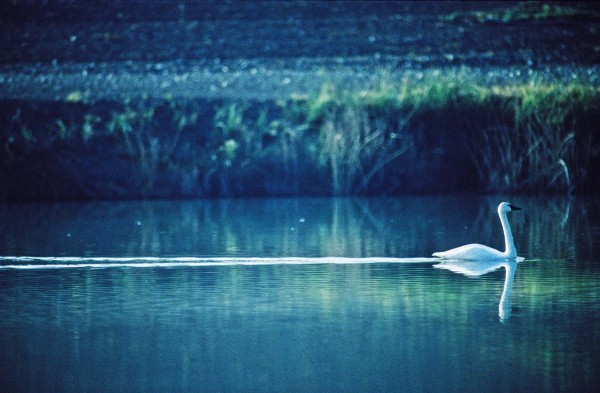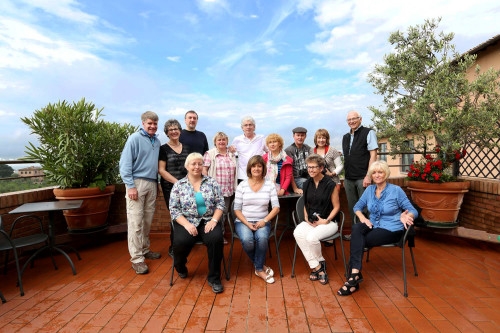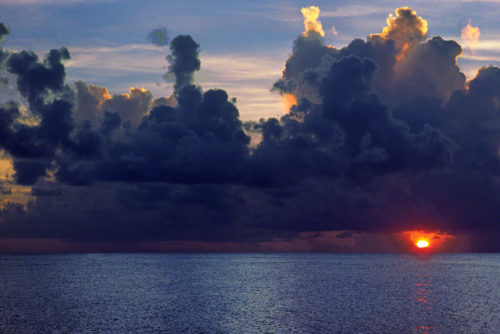Autumn in France
Hello to all,
I hope this email finds you healthy, wealthy, and wise.
This might seem a bit early, but as most of you know by now, time goes by incredibly fast and before you know it, you’ll be sitting at a café along the Garonne River having either a ‘café allonge’ or a glass of an exceptional Bordeaux from one of the many famous vineyards that are strewn along the West and East Bank of the Garonne River.
Remember how fast the future becomes the past.
Two reasons you are getting this now:
There are people out there that are still working (bless their souls) and must decide on their vacation time up to a year in advance.
Second, this period is in the timeframe of when the grapes are harvested, so as soon as we can book the hotel, the better off we will be.
It’s also possible (lately, ‘climate change’ will determine that) that we’ll be there when the leaves are turning which will allow for incredible photo opportunities.
If you’re not really doing anything else next October, I can’t think of a better way to write this workshop into your calendar.
That said, I want to introduce you to my next workshop that will start with the meet and greet in Bordeaux, France on October 2nd, 2023, and end in Toulouse on October 11th, 2023.
We’ll spend three full days and nights in Bordeaux, then go by private bus to Toulouse and spend three full days and night there.
Bordeaux, the “Elegant”, a world-renown city and UNESCO World Heritage Site, is considered one of the most beautiful cities not only in France but in all of Europe. https://duckduckgo.com/?q=Bordeaux+france+heritage+site&atb=v336-1&iax=images&ia=images
Bordeaux is a port city on the Garonne River, situated in the leading wine growing area of France, for which Bordeaux is the worldwide capital. However, not only is it famous for its vineyards, but the city is also (often referred as “the small Paris”) much more than that.
Experiencing the historical heritage, unique art de vivre, monuments, museums, and wonderful medieval buildings will have you falling in love with the city.
Bordeaux is also home to over sixteen hundred restaurants and is a playground for haute cuisine chefs. Indeed, a gastronomic paradise for those that enjoy great food…which would include yours truly, ‘moi’.
What I’m also really excited about is a location that was brought to my attention by a woman photographer that has taken several workshops with me, and she will be with me on this one as well.
Frankly I had never heard of it until Mary told me about a friend of hers that lives there. It’s where the people that live in Bordeaux go to spend summer weekends as it’s about an hour and a half from Bordeaux. It’s called Dordogne pronounced Dohr DOAN ya and you can see how magical the area is.
The different villages are absolutely amazing and we’ll be spending an entire day going from one to another.: https://duckduckgo.com/?q=dordogne+france&hps=1&atb=v336-1&iax=images&ia=images
Place de la Bourse and the Water Mirror will definitely be on our list to visit at sunset and the Blue Hour:
https://www.tripadvisor.com/Attraction_Review-g187079-d245765-Reviews-Place_de_la_Bourse-Bordeaux_Gironde_Nouvelle_Aquitaine.html
An afternoon shooting in Saint Emilion, with (hopefully) a tour of one of the wine chateaux and wine tasting. This medieval village is two thousand years old, and full of photo ops:
https://www.francethisway.com/places/saintemilion.php
Pont de Pierre: When you see the images, they will pretty much speak for themselves as far as a wonderful photo op. https://www.tripadvisor.com/Attraction_Review-g187079-d290953-Reviews-Pont_de_Pierre-Bordeaux_Gironde_Nouvelle_Aquitaine.html
City walking in Old Town or: https://www.bordeaux-tourism.co.uk/district/old-town.html
Rue Sainte-Catherine: https://www.bordeaux-tourism.co.uk/cultural-heritage/rue-sainte-catherine.html
Remember that the photos you see on this site with the mass of people were taken during the summer. In October, when we’ll be there, they will be back home.
Marche’ des Capucins: the largest market in Bordeaux:
https://www.europeanbestdestinations.com/travel-guide/bordeaux/march%C3%A9-des-capucins/
Sunset/Blue Hour on the Garonne River: https://www.google.com/search?source=univ&tbm=isch&q=sunset+on+the+Garonne+river+in+Bordeaux&client=firefox-b-1-d&fir=h4C1MsVSsxNF8M%252CWfVcrZ6SapLwWM%252C_%253Bp1BGXbBXgN3QhM%252CU_6bVS2R1wAzOM%252C_%253BytML6adtOYde0M%252C6vSRhNbC0Ed89M%252C_%253BLi_0BqBVuoPB_M%252CZ0bau6DrwhbeAM%252C_%253Bd3pqIHagNOpeEM%252C73cx8T4zDhrvrM%252C_%253BNBbE4mENKfS5DM%252C_SKaHzm00liN0M%252C_%253BEDLqQtQI0xf8bM%252CWCBnNLtucv73hM%252C_%253B75PE0SPW_LH1JM%252CQYTmNE0pS6OgOM%252C_%253BMAC-qBJs7ixz6M%252CG-Iwb4CNEve49M%252C_%253B30ZlsHVxY0GtxM%252Cwovq1nklAa9R1M%252C_&usg=AI4_-kRX6jxdDw58oo-C1ZAk-9-jNO7jaw&sa=X&ved=2ahUKEwjWx8nC-MH6AhV7IjQIHaB8CbQQ7Al6BAgCEEA&biw=1242&bih=729&dpr=2
For those interested in more of a beautiful quiet setting where the Impressionists might have painted, there is Jardin Public in the heart of Bordeaux: http://lemap-bordeaux.com/map-listing/jardin-public-public-park/
Now we’re off to Toulouse.
Founded by the Romans, Toulouse, the fourth largest city in France, is often dubbed the “Pink City” due to the pinkish color of the terracotta bricks made since Roman times, from the red alluvial mud dredged out of the river Garonne – the red of Mediterranean roof tiles, a pinky red with all the warmth of southern Europe.
In Toulouse and the surrounding area, red brick is the traditional building material, and it is this red brick that has given the city its nickname. It is the only large historic French city, apart from the industrial cities of the north of France, where brick has long competed with stone as a major building material.
You’ll see it in many of its older buildings, museums, and churches. As they say, one picture is worth a thousand words:
https://www.google.com/search?source=univ&tbm=isch&q=Toulouse&client=firefox-b-1-d&fir=fcbAvDGfMLW9UM%252CLaVc6Ps5c7L4xM%252C_%253BdWgZ-EH2rWKBBM%252C0lm4uBIVTF01qM%252C_%253BIczjODCOqbxaxM%252CbS3hEcyB0eeQWM%252C_%253BDhtfYmU1_WXIKM%252CKeXwaS33Tzu6QM%252C_%253B2Wh7S2Z3LlDrBM%252Cqk4vZp8rfa9mrM%252C_%253Bc9Y2Z_n5oGcdLM%252C4Y_HRRu2mdOlrM%252C_%253BsAwVPrLu8GrmtM%252CQkq3eRHC80gWuM%252C_%253BixGf-DkWygXm-M%252CsedJjFReypJnpM%252C_%253BUaVYcHIBMYhLXM%252CoBy_aJCBjRAD5M%252C_%253Bkz36Xvp8kGYCeM%252CJGqysci6CmxVDM%252C_&usg=AI4_-kSnXz3vNTP4UkrEkMeclK-VVU5LGw&sa=X&ved=2ahUKEwiOju2ZtsL6AhWVJX0KHX2sB-sQ7Al6BAg0EGw&biw=1440&bih=655&dpr=2
Toulouse is also situated on the Garonne River, and the Canal du Midi, another UNESCO World Heritage Site, links the river to the Mediterranean Sea.
A compact city, the central area is a maze of narrow streets, crossed as in Paris by a few wide boulevards. With its multitude of cafés, restaurants bars and boutiques, old Toulouse is a historic area with a wide range of photo ops that we would never be able to shoot them all. However, we just might give it a try and see most of them
Here are my top picks for Toulouse:
Famous for its extraordinary architecture, Toulouse, like Bordeaux is considered one of the most beautiful cities in Europe. One such building (a possible photo op) is the Basilica of St. Sernin, a UNESCO World Heritage Site. It’s stunning at night, lit up and seems to glow against the nighttime sky.
https://duckduckgo.com/?hps=1&q=basilica+of+st+sernin+toulouse&atb=v336-1&iax=images&ia=images
Canal du Midi: The Canal du Midi is a waterway that has linked Toulouse to the Mediterranean Sea for more than 300 years. Pierre Paul Riquet was its designer. In the XVII Century he managed to convince Louis XIV to carve out a canal in southern France to facilitate the movement of goods.
His idea was to capture the water that flowed off the Black Mountains in a reservoir before emptying it into the canal.
https://www.tripadvisor.com/Attraction_Review-g11038881-d241572-Reviews-Canal_du_Midi-Occitanie.html#/media-atf/241572/?albumid=-160&type=0&category=-160
A day trip to Albi: A fabulous commune an hour’s drive from Toulouse: https://duckduckgo.com/?q=albi&t=newext&atb=v336-1&iax=images&ia=images
It’s always fun to just walk around a city, and old town Toulouse is one of the best to do it in: https://duckduckgo.com/?q=old+town+in+toulouse&t=newext&atb=v336-1&iax=images&ia=images
Place du Capitole: The Capitol Square is the Center of Toulouse and is ideal for exploring the many churches, art galleries & museums: https://duckduckgo.com/?q=place+du+capitole+toulouse&t=newext&atb=v336-1&iax=images&ia=images
Walking along the banks of the Garonne River provides one the most beautiful views of the city that features the Pont Neuf, the Hôtel-Dieu Saint-Jacques, and the dome of La Grave: https://duckduckgo.com/?q=the+banks+of+the+garonne+river+in+toulouse&t=newext&atb=v336-1&iax=images&ia=images
Pont Neuf: A renowned bridge that spans the Garonne River was built over the course of several decades and finished in 1632: https://duckduckgo.com/?q=pont+neuf+in+toulouse&t=newext&atb=v336-1&iax=images&ia=images
Well, there you have it. As I said, it stands to reason that we can’t see them all in both cities. However, several are either adjacent to each other, part of the same location, or very close to each other.
I will be working with Katka (our producer from Prague) who’s onboard again working with me on the finished daily calendar and all transportation logistics. I will send it out to you sometime before the trip. We have plenty of time for that.
Rest assured, there will also be enough personal time for you to explore on your own. I will be in both locations several days ahead of time to scout all of them to make sure that as Dr. John would say we are in the right place at the right time: https://www.youtube.com/watch?v=W4PjWgiH-LQ
As previously stated, I wanted to get this out to you to give us time to book hotels in both cities. I will be researching the hotels and get back to you ASAP.
This workshop will be up there with my all-time favorites and promises to send all of you home with not only great memories, but great images to show for it; and maybe for those who want, a few bottles of vintage Bordeaux to share during your home slideshow…or maybe you don’t share!
The tourists will be gone so it’s going to be a hell of a lot less crowded than my last workshop in Italy, and the highs are around 70 degrees. What more could we ask for? Maybe some color in the leaves?
There will be ten spots open for ‘shooters’, plus spots those who want to bring a ‘non-shooter’. We’ll have our daily critiques, but I’m not sure how many days we’ll have for it. You can submit or not, it’s up to you.
However, the critiques are more interactive now, and closer to a forum where views and ideas are exchanged. It’s a great way to become a better photographer…even for me, and I’m already pretty good.
This is a longer photo workshop than usual to fit everything in. The cost of the workshop is $1900.00 for the shooters, and $900.00 for non-shooters. The non-shooters are involved with everything we do except for the daily critiques, this will include the ‘meet and greet’dinner, the (famous) final dinner, and private transportation to all the local locations and day trips. This will also include the private bus transfer from Bordeaux to Toulouse.
When you sign up, I will give you a list of travel insurance companies that I’m now recommending, and what the first deposit will be.
As always, I offer a first-class workshop and I’m also a ‘hands on’ fellow photographer who always makes himself available to shoot with you and answer any of your photo questions. Just ask these people:
I just finished taking Joe’s workshop. I simply cannot recommend it highly enough. I cannot adequately express my gratitude to Joe for his approach to teaching and his willingness to share his tremendous wealth of knowledge.
Learning about critical elements of design and the discovery of the artist’s palette has changed the way I make pictures, and the way I look at the world. This has been a truly outstanding experience with an outstanding teacher. Thank you, Joe!
Alain
I recently completed my third workshop with Joe Baraban, and all I can say is that I will be coming back for more. All aspects of the workshop were fantastic. Joe’s approach to teaching, the shooting locations, the daily reviews, the accommodations, the planning and organization, and the communications were all at the highest level.
From the “meet and greet” reception the first night, to the final dinner, Joe paid strict attention to every detail to make sure we were well taken care of…all the time. Joe’s selection of locations are always diverse and challenging and present many, many opportunities for great shots and learning.
The daily reviews are a wonderful educational experience as you discuss your own work as well as the work of the other photographers. Joe teaches how to “make pictures”, not just take them. The quality and creativity in my images continue to ratchet up a notch with every workshop as I continue to learn from Joe.
I highly recommend Joe’s workshops and online classes.
Nick
I recently completed my 3rd photography workshop with Joe Baraban. The location was Houston, TX. All I can say is that I will be coming back for more! All aspects of the workshop were fantastic: Joe’s approach to teaching; the shooting locations; the critiques; the individual attention; the accommodations; the planning and organization; and the great communications.
From the “Meet and Greet” reception the first night to the final dinner, Joe and Mikki paid strict attention to every level of detail making sure that were very well taken care, all the time. And the photography was great too! Joe’s selection of locations was diverse and challenging and presented many, many opportunities for great shots and for learning.
The critiques are a wonderful educational experience as you discuss your own work as well as the work of the other photographers. Joe teaches how to “make pictures”, not how to take pictures. There was never a dull moment! The quality and creativity in my photographs continue to ratchet up a notch as I learn from Joe. I highly recommend Joe’s workshops as well his online courses.
Knowing these critical elements of design have truly not only changed how and what I photograph but have changed the way I look at the world in a very real way.
I cannot adequately express my gratitude to Joe for his caring and expertise and if you are considering taking a class or workshop with Joe think no more as I cannot recommend him highly enough. Just DO IT!!!
Shauna
Joe Baraban’s workshop is first rate and pitched at a level that in my opinion would provide a strong learning experience for any photographer, no matter their level or their primary area of photographic interest.
Joe is attentive, and his workshops are well prepared and illustrative of the concepts being put forward. Better yet, supplementary tips and advice were passed along to participants in neat little packages with titles like “The fifteen-point inspection plan”. His photo critiques are honest and very helpful. Several of us would take a second, third, and fourth workshop offered by Joe.
Murray
I attended Joe’s Paris workshop and received a lot of valuable information in less than a week.
Joe’s workshops begin with an informal meet and greet where all the participants and spouses can meet each other with food and wine.
Usually, each day start before dawn with an air-conditioned private bus trip to a pre-scouted shooting location. Joe gives suggestions for shooting before and during each shoot. He moves around to each photographer during the shoots and gives “hands-on tips” and suggestions that are wonderful and instructive.
Each day there is a very constructive critique of the work that was shot the day before. Joe has everyone involved and he asks people their opinions.
I have not attended many formal workshops and I was happy that the comments of the other shooters and those from Joe were very helpful and allowed everyone to get real feedback so soon after shooting.
I can truly say that the workshop immediately helped me, and I believe that my photos have much improved. It was a wonderful experience and made me a better photographer. It also gave me a chance to make friends with the other photographers.
John B
I wanted to learn more about Joe’s approach to visual design and making great photos after taking one of his online courses. As a former painter, I really relate to his focus on visual design elements as his artist’s palate and it all came to life in this workshop.
He is an excellent teacher, and it was wonderful to experience this with a group of very talented photographers who supported each other and did some great work. The format of learning the design principles and discussing them in relation to Joe’s images and the work from the class was a great way to learn – I look forward to future workshops.
Cynthia



























































































